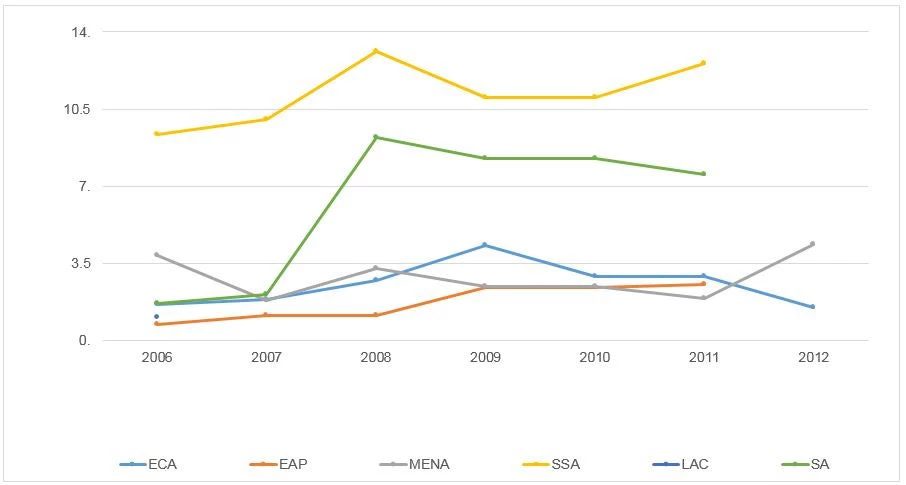This blog originally appeared in Monkey Cage.
 What are the common characteristics among people who justify attacks targeting civilians? In a new paper, we address this question by focusing on attitudes toward violent extremism. We do not study the process of becoming radicalized — or the characteristics of known perpetrators of terrorist attacks—but the characteristics of people surveyed in opinion polls who said they believed terrorist attacks on civilians were justified. People with such an extremist belief may not commit terrorist acts themselves, but they may be at high risk of being recruited by terrorist organizations, or may sympathize with terrorist organizations and be prepared to help them.
What are the common characteristics among people who justify attacks targeting civilians? In a new paper, we address this question by focusing on attitudes toward violent extremism. We do not study the process of becoming radicalized — or the characteristics of known perpetrators of terrorist attacks—but the characteristics of people surveyed in opinion polls who said they believed terrorist attacks on civilians were justified. People with such an extremist belief may not commit terrorist acts themselves, but they may be at high risk of being recruited by terrorist organizations, or may sympathize with terrorist organizations and be prepared to help them.
We use data from 2006 to 2012 Gallup World Polls that include answers to the question: “I would like you to indicate to which extent it can be morally justified: attacks in which civilians are the target.” The responses, ordered from 1 — for those who believe that such attacks “cannot be justified at all”— to 5 — for those who consider such attacks “completely justifiable”—reveal individuals’ attitudes to extreme violence. The comprehensive survey data also has detailed information on a host of individual and household characteristics and views in many countries around the world.
Figure 1: Distribution of responses to the radicalization question
(Percent of all respondents in pooled sample)
Source: Kiendrebeogo and Ianchovichina (2016) based on Gallup World Poll data.
The full sample of responses in the Gallup data used in our analysis reflects the attitudes of individuals from 27 developing countries in five geographic regions of the world – the Middle East and North Africa (MENA), Sub-Saharan Africa, South Asia, Southeast Asia, and Central Asia. The vast majority of respondents (close to 74 percent) believe that attacks on civilians cannot be justified at all (Figure 1). Some 10 percent of those surveyed find such attacks “mildly unjustifiable,” while 7 percent of respondents say they are indifferent to them. However, about 9 percent of respondents believe attacks on civilians are “mildly justifiable” (3.5 percent) or “completely justifiable” (5.6 percent). We profile the latter group of respondents with the most extreme views, as they find attacks on civilians completely justifiable.
Figure 2: Incidence of extremists by region
(Percent of respondents)
Source: Kiendrebeogo and Ianchovichina (2016) based on Gallup World Poll.
Notes: The regions are defined following the World Bank’s regional definitions.
The proportion of extremist respondents varies substantially across regions and countries . Overall, in the time period we are looking at, Sub-Saharan Africa stands out as the region with the highest incidence of individuals with extreme views; they represent more than 10 percent of the surveyed population during most of the years in the time period of interest (Figure 2). The region with the second highest incidence of extremists is South Asia . In both regions, the prevalence of such individuals increased after 2007. In the Middle East and North Africa, the incidence of extremists was as low as it was in Central and Southeast Asia, averaging about 2 percent, but increased to 4 percent after the Arab Spring in 2011.
The incidence of support for extremist views varies substantially across MENA countries , ranging from less than half a percent in Morocco to nearly 34 percent in Djibouti, and averaging close to 6 percent worldwide. So, globally, the prevalence of people with extreme attitudes toward violence is low —but not negligible.
Our findings suggest that individuals with extreme attitudes tend to be young people . The probability that a person holds extreme beliefs increases with age during youth and early adulthood, peaks at 33, and declines afterwards. It is more likely to find people with extreme attitudes among the unemployed , among those struggling to make ends meet, the relatively uneducated, and individuals who are not as religious as others around them but who are willing to sacrifice their own life for their beliefs. In other words, extremists may get inspired by militant religious ideas and therefore may support violent acts motivated by such beliefs, but religion may not necessarily play an important role in their lives.
We find important differences across regions. Unlike in MENA, people with extreme attitudes in Sub-Saharan Africa and South Asia are more likely to be poor and unemployed than others, and they are also likely to be among the least educated in their countries. Not surprisingly, terrorist groups have been able to establish lasting presence in the poorest and most disadvantaged areas of these two regions. In MENA, extremists come from all sorts of socioeconomic backgrounds , but they are significantly less likely than others to have college and university diplomas.
Our findings are surprising as they do not support several common views about extremism.
Women are just as likely as men to have extreme attitudes toward violence targeting civilians.
Attitudes toward violent extremism do not differ significantly between single and married people, except in Central Asia, where single people are more likely to hold extreme views.
The prevalence of people with extreme attitudes toward violence targeting civilians has been relatively low in MENA until 2011, the year of the Arab Spring.
Our results dispel the myth that religious people in general are more likely to approve of violence toward civilians. Only in Central Asia (Tajikistan, Azerbaijan and Kyrgyzstan), are extremists more likely to be people for whom religion plays an important role.
However, individuals willing to sacrifice their own lives for their beliefs — social, religious, political, or economic — are also significantly more likely than others to be extremists in their attitudes toward violence.
Of all the people who are willing to risk their lives, they mostly do so to protect the lives of innocent civilians. Police officers and security guards are an example. Extremists are a small but non-negligible subset of this group in the developing world.
This analysis, based on data from Gallup World Polls, fits into the prevailing narrative on terrorism by providing rigorous empirical evidence on the traits common to individuals who justify extreme violence against civilians. The rise of terrorist incidents around the world suggests that there is a need to deepen our understanding of the complex problems related to extreme violence and our efforts to collect new data on these issues.




Join the Conversation